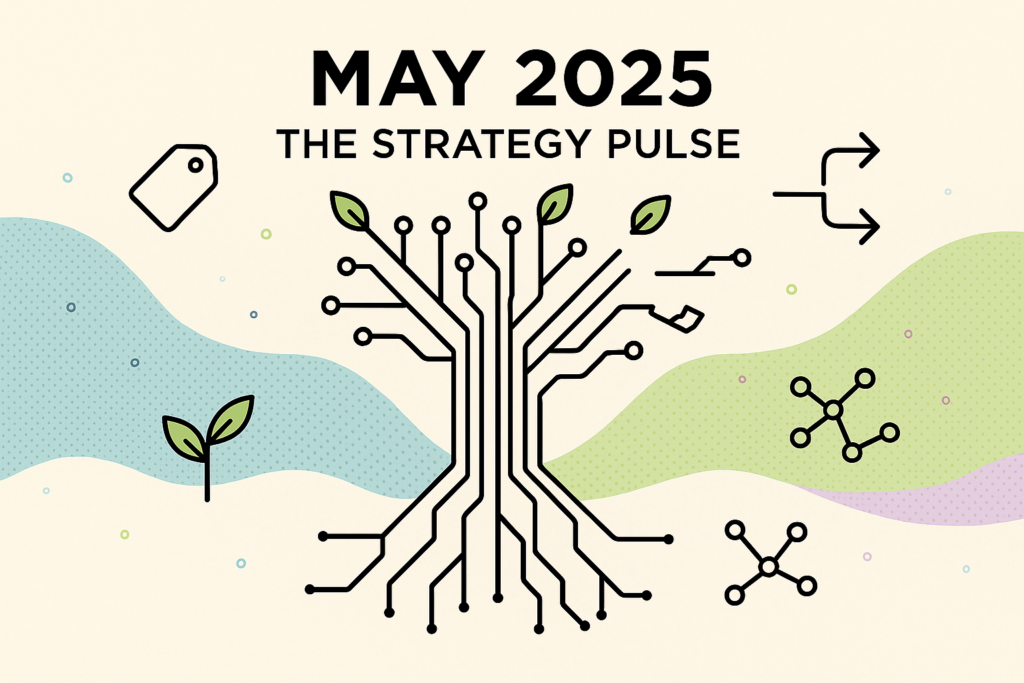Month: February 2023

Signs of a Toxic Workplace – and When to Call it Quits
Signs of a Toxic Workplace – and When to Call it Quits
February 15, 2023

Picture this: you’re chatting away with friends over a glass of wine without a care in the world, when someone suddenly decides to raise the topic of work. Whilst everyone else gushes about their friendly co-workers and supportive boss, you opt to share the fact that, unfortunately, you hate your job. Your office is a hotbed of manipulation, bullying, mismanagement, miscommunication and questionable power dynamics. You share all of this with your friends, who surprisingly laugh it off. “We’ve all been there”, they scoff. “Happens to the best of us”.
In reality, a toxic workplace is no laughing matter. At what point did an unhappy working environment become normalised? Working in a toxic environment can be incredibly detrimental to your mental health, leading to burnout, chronic stress, and anxiety – and this can ultimately seep into your life outside the office. In a recent survey, 42% of UK participants revealed that a toxic workplace culture negatively impacted their mental health.
A lot of us have worked in a toxic workplace at some point in our careers. It could be glaringly obvious from the get-go, but it may also seem so minor – a series of strange or awkward experiences that gradually pile on top of one another – that it’s almost imperceptible at the time. A toxic workplace culture cannot be boiled down to one single factor. It’s often more insidious than that, weaved into the very fabric of the company itself. It’s so deep-rooted that, unfortunately, changing the circumstances often lays beyond your control – leaving may actually be the only solution. A third of UK employees left their jobs in 2021 due to stress caused by a toxic work environment.
There are certain red flags you should remain alert to in order to ascertain if your workplace is toxic. Read on to find out what some of the warning signs are, and at what point you should consider making a clean break from a company that is dragging you down.
A bullying boss
One of the most obvious symptoms of a toxic workplace is a bad boss, who treats you poorly, yet somehow gaslights you into thinking that you’re lucky to be working there in the first place. More than two in five UK employees have left their jobs due to a bad manager.
Poor leadership manifests itself in many different ways: perhaps your boss micromanages you; fails to respect your boundaries (by calling or emailing you incessantly on the weekend, for example); criticises your work to no end, and holds impossibly high standards.
Lack of communication
Whether it’s coming from your manager or your colleagues, there’s nothing worse than feeling left in the lurch due to a lack of communication. In many toxic working environments, employees may feel haunted by a sense that their co-workers aren’t being entirely open with them, or that their working environment is not a safe space where they can openly raise concerns and vocalise any issues they may have.
You may feel in the dark, like you don’t know what you should be doing, or what falls under your remit. If something goes wrong, it often degenerates into finger-pointing – playing the blame game. There’s constant miscommunication, so that it feels like you’ve fallen into a particularly awkward episode of The Office.
Gossip and cliquey behaviour
Another red flag that often rears it head in a toxic workplace is gossip and cliquey behaviour. Working in these kind of environments can feel like you never left high school. You might be knuckling down on an important project when you hear anxiety-inducing whispers and titters emanating towards you from the water fountain, or perhaps you’re at a work social trying to make friends, but you’re instead met with cold stares and turned backs as everyone retreats into their pre-established cliques.
Gossip is one of the main culprits of poor productivity in a workplace; it creates an aura of discomfort, anxiety, and distrust. Teams that perpetuate and encourage this kind of behaviour are destined to underperform.
Toxic workplaces often don’t feel collaborative and democratic, but rather dominated by rumours, childish dynamics, and playing favourites. It can sometimes feel like you’ve been teleported back to a medieval royal court – there’s the same level of intrigue, drama and foul play going on.
Negative energy
Negative energy is hard to define. It’s a feeling that permeates the office, so much so that it weighs you down as soon as you walk through the door in the morning. It’s hard to put your finger on, but it lingers stagnantly in the air like a bad smell.
In a positive work environment, you’ll likely walk into your office and be greeted with “good mornings”. Any healthy working day is studded intermittently with the occasional snippet of office banter; perhaps someone sends you a funny meme or drops you a friendly message, asking about your weekend.
It becomes clear that your workplace is a negative space when colleagues don’t want to spend any time with one another outside of office hours. Rather than going for after-work drinks or forming WhatsApp chats for out-of-hours catch-ups, you’ll notice everyone leaving the office abruptly, as promptly as they arrived that morning.
When is it time to leave a toxic workplace behind?
Tip number one: if you’re working in a toxic environment, never just say you’ll stick it out for a while and see what happens. If the atmosphere at your company is claustrophobic, lonely, gossipy, uber-competitive and full of bullies, that’s not going to change (at least not without some major readjustments and overhauls initiated by higher-ups in the company). You need to take decisive action and, if this proves futile, you need to move on for the sake of your wellbeing and your own personal development.
Whilst it’s worth starting out by raising certain issues with your HR department, you may find that some problems are so fundamental to the company that you cannot change the situation. In which case, the best course of action is to start looking for opportunities elsewhere.
Lucky for you, as you go through a new hiring process, you know now which red flags to look out for and when to bow out of a company’s application process. As soon as a company starts displaying symptoms of a toxic work environment, you know it’s best to steer clear. Is the hiring manager giving you hardly any time to complete a task and yet taking ages to get back to you with feedback? Raise questions in your interviews about company culture so you can gauge if it would be a more positive environment to work in, or if it would be taking you back to square one.
Ultimately, you have to do what’s right for you – and there is absolutely nothing wrong with putting your mental health first and leaving toxic circumstances behind.

Data Digest #5: Buzzfeed Quizzes and Angry Artists
Data Digest #5: Buzzfeed Quizzes and Angry Artists
February 1, 2023

The cogs of the data world are perpetually turning. Data never sleeps. Brace yourself for an exciting overview into some of the top data news stories that have been gracing our screens over the past month.
The Guardian: Buzzfeed using AI for content and quizzes
If you were a pre-teen in the 2010s, chances are you’ll be all too familiar with the wonderful world of Buzzfeed quizzes. It was a universal experience: coming home from school and heading straight for the computer, where instead of doing homework, you’d wile away the hours doing quizzes to find out ‘what character from the Vampire Diaries’ or ‘what type of Converse trainer’ you are. It was the pinnacle of pre-teen procrastination.
Well, turns out Buzzfeed is moving with the times, as they’re now planning to incorporate artificial intelligence into their online quizzes and content. According to an internal memo sent out to employees, the company will begin using technology by OpenAI, the company that is also responsible for ChatGPT, the famous (and controversial) new chatbot tool that is taking the world by storm. Buzzfeed is the latest in a string of journalistic platforms to begin using artificial intelligence for content purposes. Whilst the technology is not perfect by any means (human editors are still required to scout for errors), is it only a matter of time before journalism as we know it changes forever?
The Guardian: BuzzFeed to use AI to ‘enhance’ its content and quizzes – report
The Telegraph: Shopping habits diagnosing ovarian cancer?
According to a new study, data from loyalty cards could indicate early signs of ovarian cancer in women up to eight months before diagnosis. Women suffering from ovarian cancer in its earliest stages may experience problems such as bloating and indigestion, and so many turn to over-the-counter medication to resolve these issues, believing it to be nothing serious. It may now be possible to harness this purchasing data to diagnose women with the disease earlier.
Early diagnosis is vital when it comes to treatment. 93% of women diagnosed with the disease in its earliest stages survive for five years or more, whilst the outlook is much less positive when diagnosed at the latest stage, as low as 13 percent. Thus, this data could be a gamechanger and could save the lives of thousands of women.
The Telegraph: How your shopping habits could help diagnose ovarian cancer eight months earlier
Wired: ChatGPT as a means of cheating on homework
As mentioned earlier, ChatGPT is currently causing quite the sensation in the tech world. The chatbot is able to respond to a vast array of queries with astounding accuracy; it can solve computer bugs, answer problem-solving questions and even recommend reading material based on your taste in books.
Whilst many companies are already rushing to adopt the technology (see above), others are less enthused about the prospect of ChatGPT infiltrating their workplace. Teachers, in particular, feel like it might spell disaster for their students. New York City’s board of education has already banned it as a pre-emptive measure.
As we know, the technology has the potential to answer pretty much any question you throw at it. Does that mean that students could ask the chatbot their homework questions and copy the answers?
Well, when some teachers put this to the test by asking the technology some typical questions themselves, the answer turned out to be a pretty resounding no. Whilst ChatGPT has the ability to answer questions and solve problems itself, there is one consistent flaw: the answers don’t read as authentically human. No 11-year-old child would be capable of answering the questions in the way that the chatbot does, and equally, no GCSE student would plausibly be able to submit an essay written by the software. So, while ChatGPT has its fair share of uses, the days of students realistically being able to use it to cheat in exams and on their homework are still a long way off.
Wired: ChatGPT Is Coming for Classrooms. Don’t Panic
BBC: Covid-19 modelling data draws to a close
It seems like the dark days of the pandemic might well and truly be behind us. The UK Health Security Agency announced at the beginning of this month that it will stop publishing Covid-19 modelling data. It has been deemed no longer considered necessary for the sake of public health, due to the fact that people are living with and managing the virus in a much more controlled way, thanks to vaccines.
When we were still in the throes of the pandemic, many of us were religiously checking the R-rate (reproductive rate of the virus), as it was being updated weekly. Since April, this has been reduced to a fortnightly update, and now, it will no longer be tracked as vigorously. From now on, the medical community will continue to monitor the disease, reintroducing the modelling data if necessary (if a new variant of concern emerges, for example).
BBC: UK Covid modelling data to stop being published
Financial Times: Getty Images files lawsuit against Stability AI
Generative AI may seem like a fun, innocent tool at first. Many of us have dabbled with the LensaAI app to see what we’d look like as cartoon characters after the platform went viral on social media. But how ethical is this technology in reality? Generative AI cannot exist in a vacuum. It’s built off the back of billions of pieces of artwork made by real, human creators.
In light of this, Getty Images has filed a copyright claim in the UK High Court against one such platform, Stability AI, which is a free tool that generates images for users. Getty claims that Stability AI copied millions of images – many of which potentially came from Getty’s store of over 135 million images – in making their technology a reality.
Tech companies across the globe will be particularly invested in this case. The way it unfolds will have huge implications in the future. If the court finds that it is not okay for Stability AI to process artists’ work for their own purposes without giving credit or compensation and that this is a copyright infringement, similar AI tools will all need change tack to avoid similar lawsuits themselves. Whatever happens, this case could significantly change the course of AI development in the UK.
Financial Times: Art and artificial intelligence collide in landmark legal dispute

